The Alchemy Behind Nai Palm’s Intuitive and Curious Techniques
This interview with Nai Palm (Hiatus Kaiyote) originally appeared as the cover story of She Shreds Issue #16, which was released in December 2018.
“Well, I am on the other side of the planet,” says Naomi Saalfield with a laugh, after we get disconnected on FaceTime for a second time. It’s nearing 11 p.m. in Australia, where the singer-songwriter—better known as Nai Palm—is calling from. “I’m kind of proud of the technology,” she adds. “It almost has to run further to reach you.” Saalfield’s appreciation for the little things in life is infectious: it is amazing that we can talk to people across the world, if you take a second to think about it.
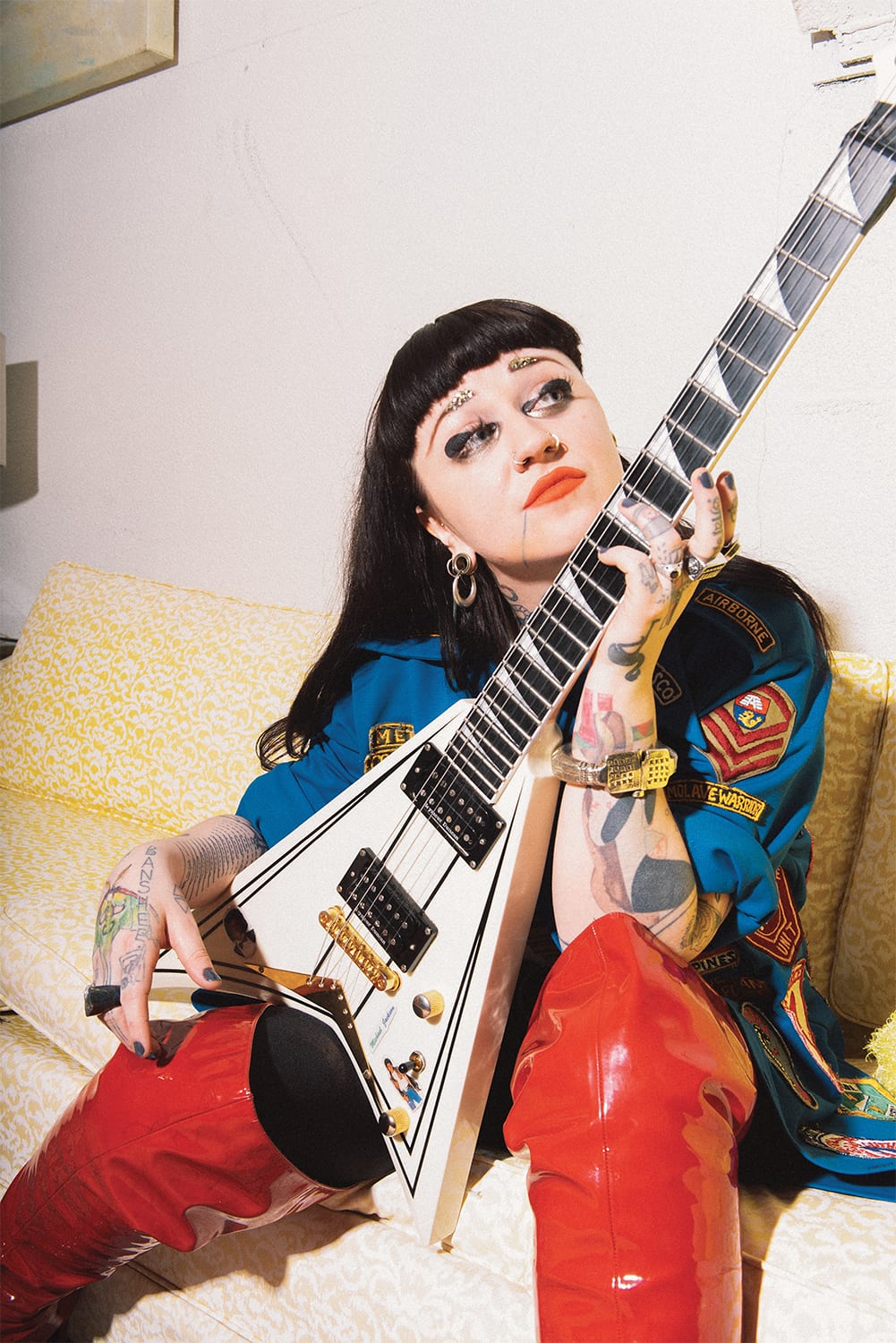
As the driving force behind the rapidly rising eclectic R&B group Hiatus Kaiyote, Saalfield has been forging her own sonic path since she was a child. Her mom introduced her to music beyond the local FM station, and once she found her bandmates (Paul Bender on bass, Simon Mavin on keyboards, and Perrin Moss on drums), her imagination and experimentation exploded. Both of the Melbourne band’s lush and groove-filled LPs—2012’s Tawk Tomahawk and 2015’s Choose Your Weapon (Flying Buddha)—earned Grammy nominations as well as an international following including fans like Kendrick Lamar, Drake, Anderson .Paak, and the Carter family.
In 2017, between recording, touring, and collaborating with superstars, Saalfield released a gorgeously sparse and raw solo album, Needle Paw (Sony), fully displaying her complex song structures, guitar tone, and atmospheric voice. Now, a year after Needle Paw’s release, Saalfield has reunited with Hiatus and is ready to share what she’s learned, including who she’s been listening to lately (Jaala, St Vincent, Rosinha de Valenca, Angel Olsen) and her current aspirations as an artist and a guitarist.
She Shreds also spoke with Saalfield about connecting with fans across the world, her songwriting process, and her ultimate goal to always make her guitar sound like “throwing cutlery in a microwave.”
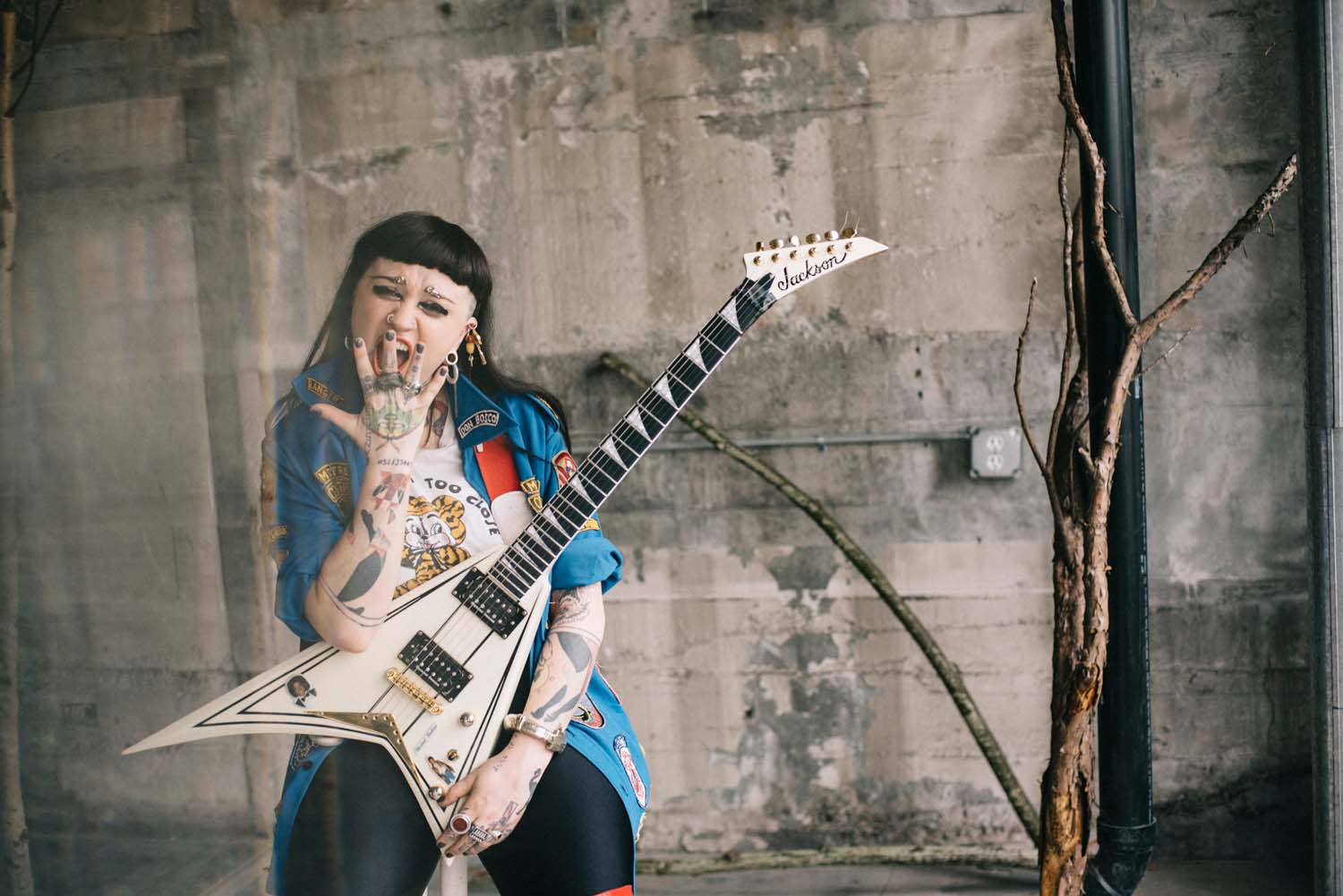
She Shreds: How did you first connect with the guitar and songwriting?
Nai Palm: We always had an upright piano in the house growing up. I think that was my first introduction and understanding of an instrument beyond my voice. I wouldn’t say it was my best writing [laughs], but it definitely got the ball rolling. When I was 11, my mom died, and I moved to the country. My eldest brother—he’s not my blood brother—was always playing bass. I remember—this is super embarrassing but fuck it—my older sister was learning bass [from]him. And I’m from a family of six; you always have to prove yourself. I saw my sister playing bass and I was like, “Oh, I can do that faster,” and I would pick it up and figure out, by ear, the things that she was learning just so I could show her up. So it all started because I was an asshole.
My mom raised me on soul, flamenco, and Northwest African, like Saharan music, but this brother was into Jimi Hendrix, Led Zeppelin, and all the classic rock stuff. It was a whole new path of music for me, but I started to find that the bass was harmonically limiting. I was grieving, living in the country; I didn’t have shit to do and there was [my aunt’s] acoustic guitar lying around. I would find a note and harmonize with it and then find that note and harmonize with that. That’s still kind of how I come up with my chords today—I get a note and sing the adjacent harmony, and then do stacks like that.
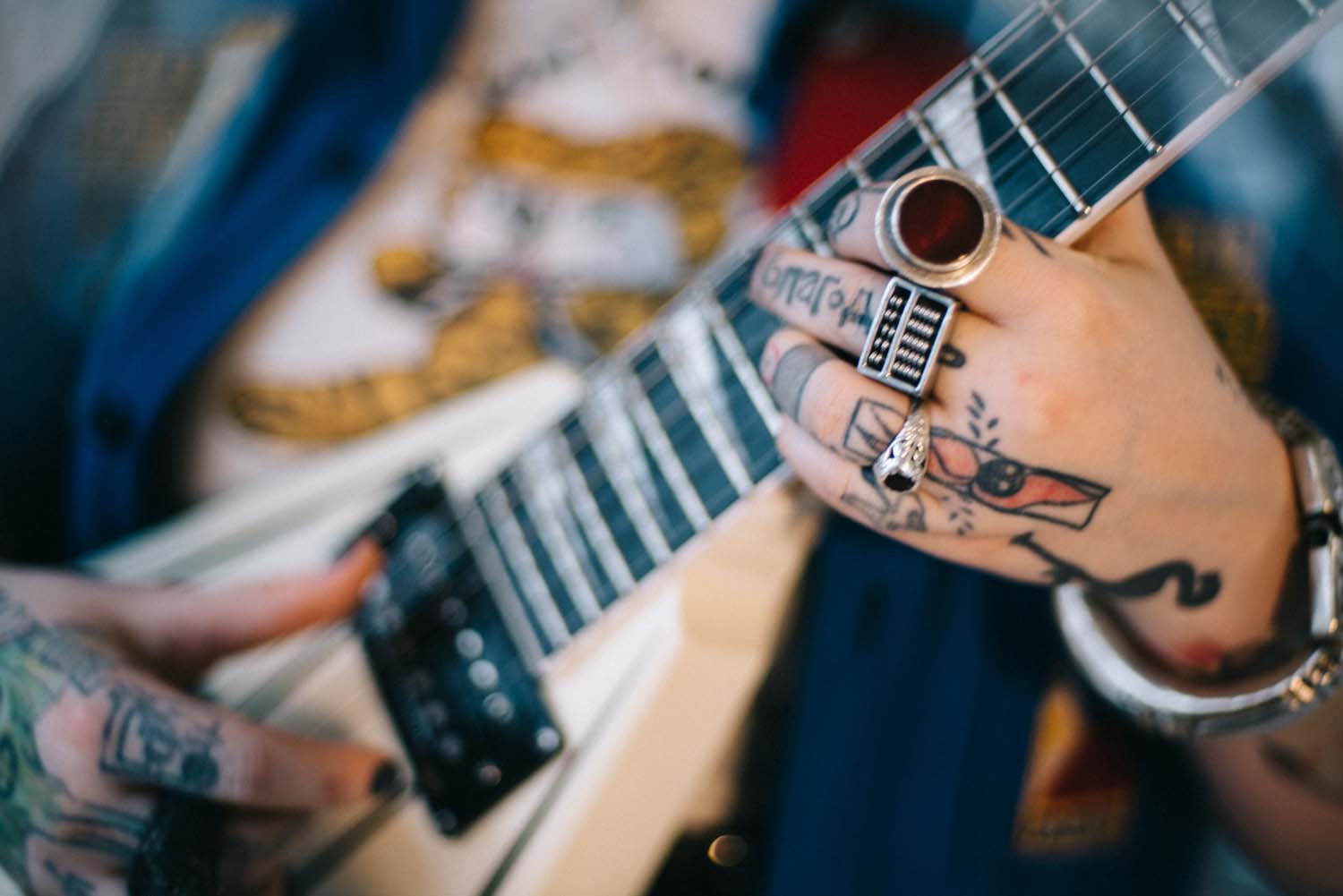
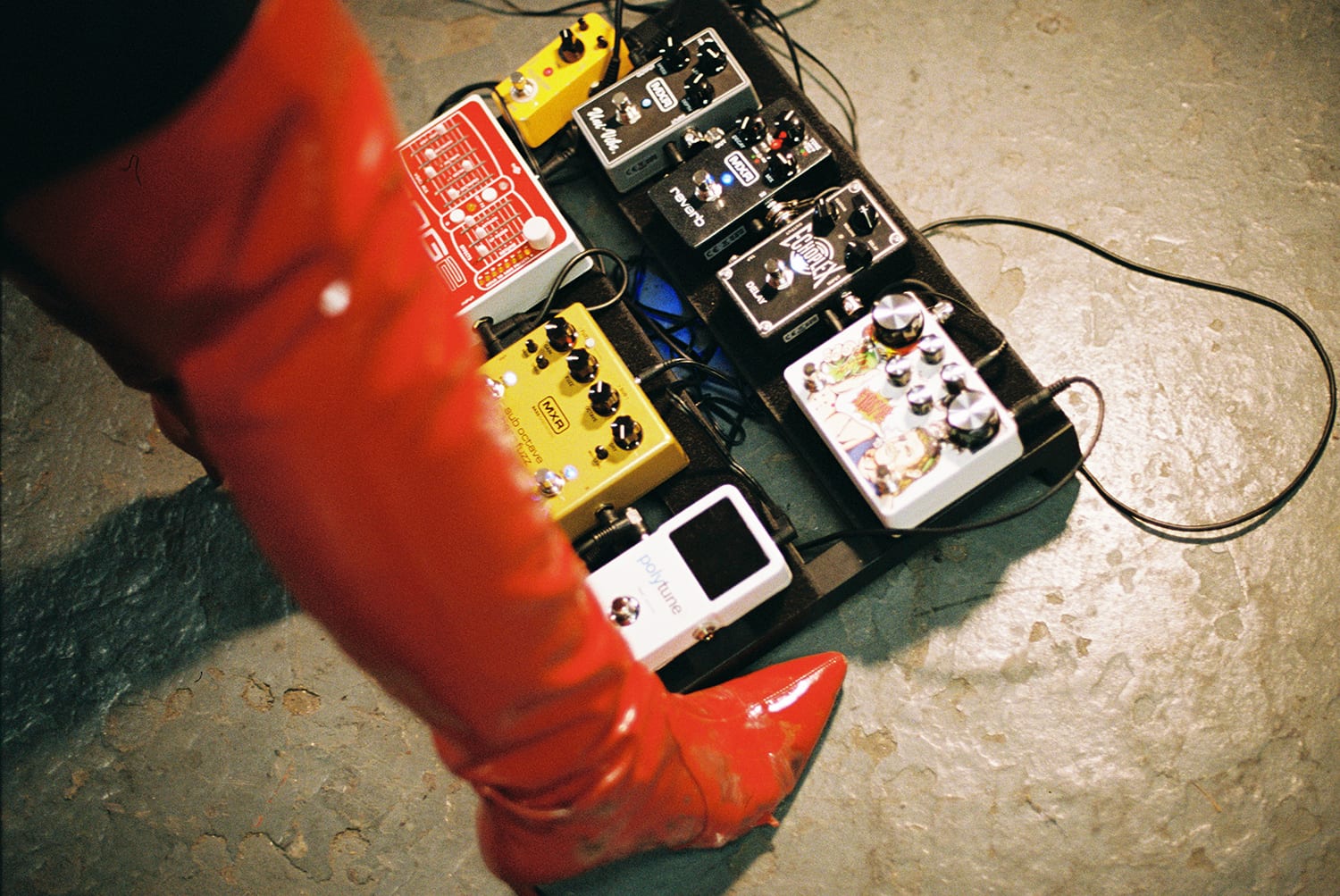
Do you have perfect pitch?
I don’t think so! I was blessed to be exposed to a lot of advanced harmony at a young age, so as a result of that, when I went to write, my concept of time signatures and harmonies was very broad. If you think about gamelan music for example—a lot of gamelan music is very atonal compared to your standard Western pop. So when I went to write songs, I was never trying to be tricky, that’s just what I knew music to be.
Do you know this band called the Shaggs? They were limited [when it came to prior music knowledge], so when they went to write music, they didn’t know what the fuck to base it off of. And then they created this amazing world. I feel like listening to the Shaggs is like the left and right hemispheres of your brain trying to escape each other in the best way.
So your first guitar was your aunt’s acoustic that was lying around, but what was the first one that you actually bought?
Well, I actually just bought my first guitar last year! [Laughs.] I just watched this documentary called It Might Get Loud. There’s this scene when Jack White is hacking into a hollow body Gretsch and putting a harmonica mic into it, making this FrankenGretsch. I thought that I had to save up and get a Gretsch because it gets this real crunchy sound; it’s like getting a hug from a porcupine. It’s prickly but it’s warm.
So I started to save up for this Gretsch. I’m going to be honest with you, I wanted it because I hated getting typecast as an acoustic singer-songwriter, because the shit I was playing was not that. I love a lot of acoustic singer-songwriters, but I knew that wasn’t me and I hated being judged, like, “Oh great, another chick with an acoustic guitar.” I’ve had heaps of demons with that because I [often] write on a nylon guitar because of the resonance, but on tour I only play electric guitars as my “fuck you” to being typecast. That’s why my first guitar I actually bought was a Randy Rhoads Jackson, which is kind of like a flying V.
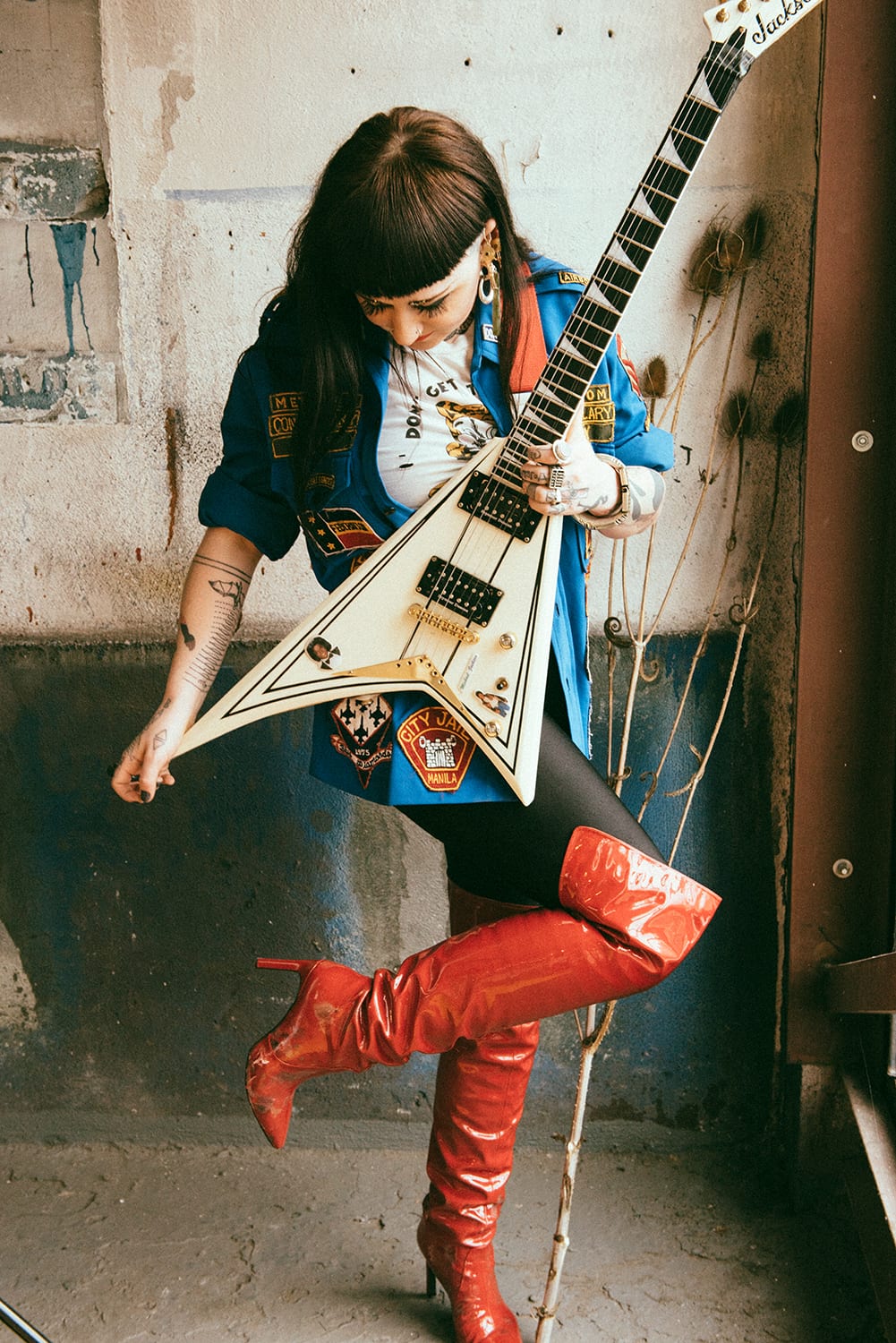
That guitar is usually associated with metal, though?
Right! I love fucking with being typecast, especially as a woman in the music industry. I’m like, “No, fuck you. I’m going to play ballads on a metal guitar!” I played an Ibanez Artstar for years that I borrowed from my friend for one of my first gigs. He gave it to me and was like, “I can’t think of a better contribution to music… you need to have this guitar,” which was so beautiful. It’s actually the guitar [in]the “Nakamarra” video. Then D’Angelico gave me a guitar to play because they wanted more female reps, and I ended up making a custom hollow body that I played for a while. Then I was on tour and recording, and the electronics fucked out, and I was like, “You know what? It’s time.” It’s such a rite of passage to buy your first guitar and I had [lasted] my whole music career without ever actually doing that, so I went to a Gibson showroom. Lianne La Havas FaceTimes me from Costa Rica on her birthday, and together we’re walking through a guitar shop, and I’m going through the metal section and she says, “That one!” I tried all these other ones and then I chose that one, which actually worked out amazingly because I have really tiny hands and Jacksons are designed for shredding. The action on them is really amazing and easy to play.
Most of my guitar influences are usually not guitars, actually. The riff for “Breathing Underwater” was inspired by kora, an African harp from north West Africa. And I really love koto—the Japanese stringed instrument—so quite often when looking for guitar tones or ideas, [I’m looking] to something that’s not a guitar.
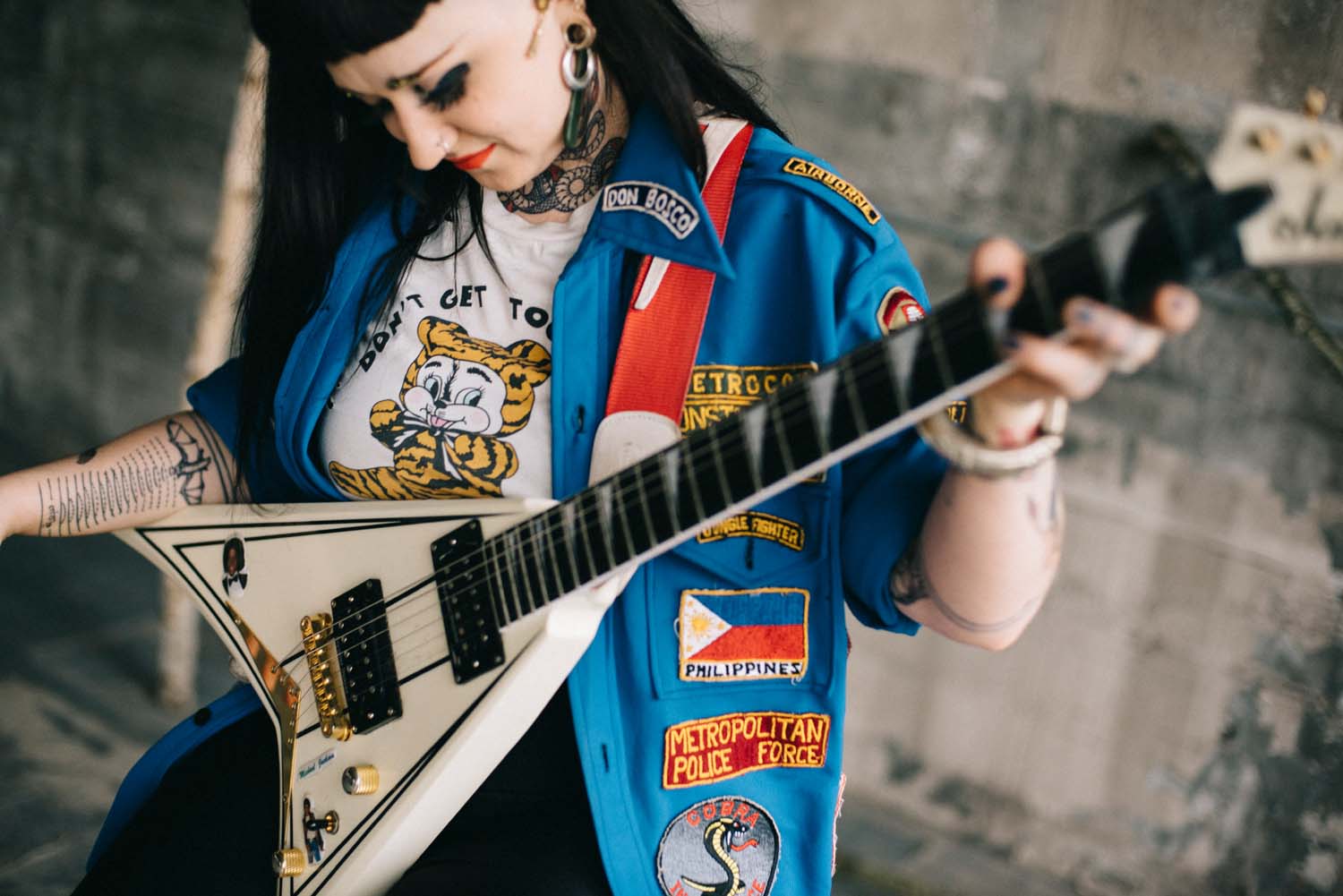
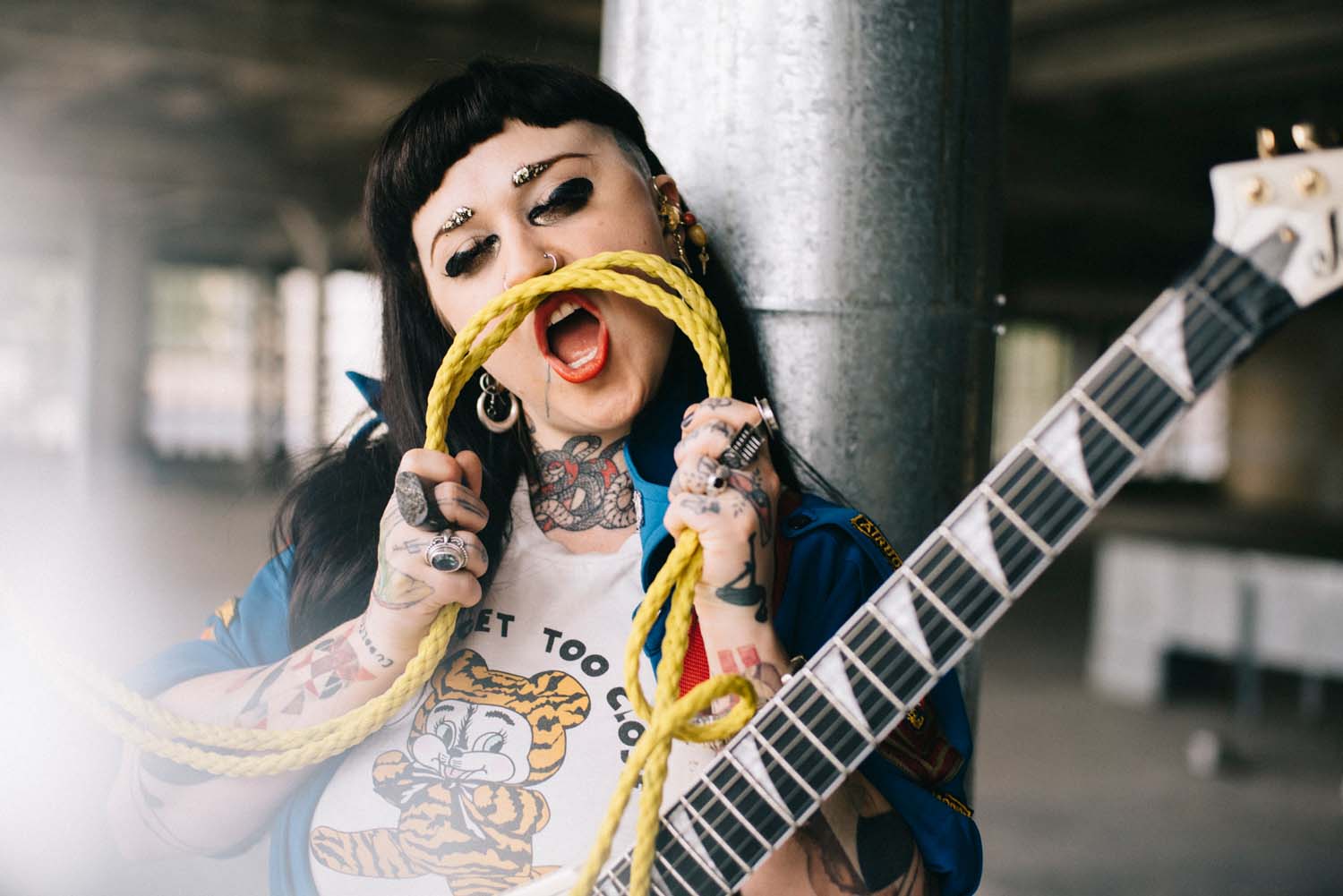
How do you know when you’ve achieved that sound?
A lot of it is just intuitive. It’s hard to explain. I’m a very visual person. I have a lot of musical references and this obsession with finding how things are similar that are culturally different, with finding the common denominator. It dictates how I create; I hear it, I visualize it, and then the struggle is the technical side, but it all comes down to patience. I’m very obsessive when it comes to the execution of something. [Laughs.] Most people will be transient with their ideas; I’m a very specific and individual person. I have the patience to wait until it reveals itself to me.
For the lyrics, it’s always so hard for me to talk about because it’s so deep, so complex, and so multilayered. Once you make an album, it exists forever. I love albums that you can re-listen to years later and find a new tiny detail. I love that research component. Music lovers are curious; people who love art are curious. You could be like, “I love this song, it sounds great when I play it in my car,” or you could write a fucking thesis about it! I love attention to detail even [with] things that are going to be missed by the majority of people; they’re like little hidden messages. So, from a sonic standpoint to a lyrical standpoint, I’m a very sentimental person. I try to have sentimental complexity in everything I do, not just music that I write. It is part of who I am so naturally.
What are your interactions with fans like? Do they usually find these hidden deeper layers?
Well, that’s the beautiful thing: [my fans] have their own theories that are totally not what [the songs were written] about. But that’s the beauty of art. How you listen to music is unique to you. You could have a room full of people listening to the exact same song and what each of them takes away from it will be personalized. That’s really why I do what I do, because it goes off and has these interactions with people’s lives that I couldn’t even think of.
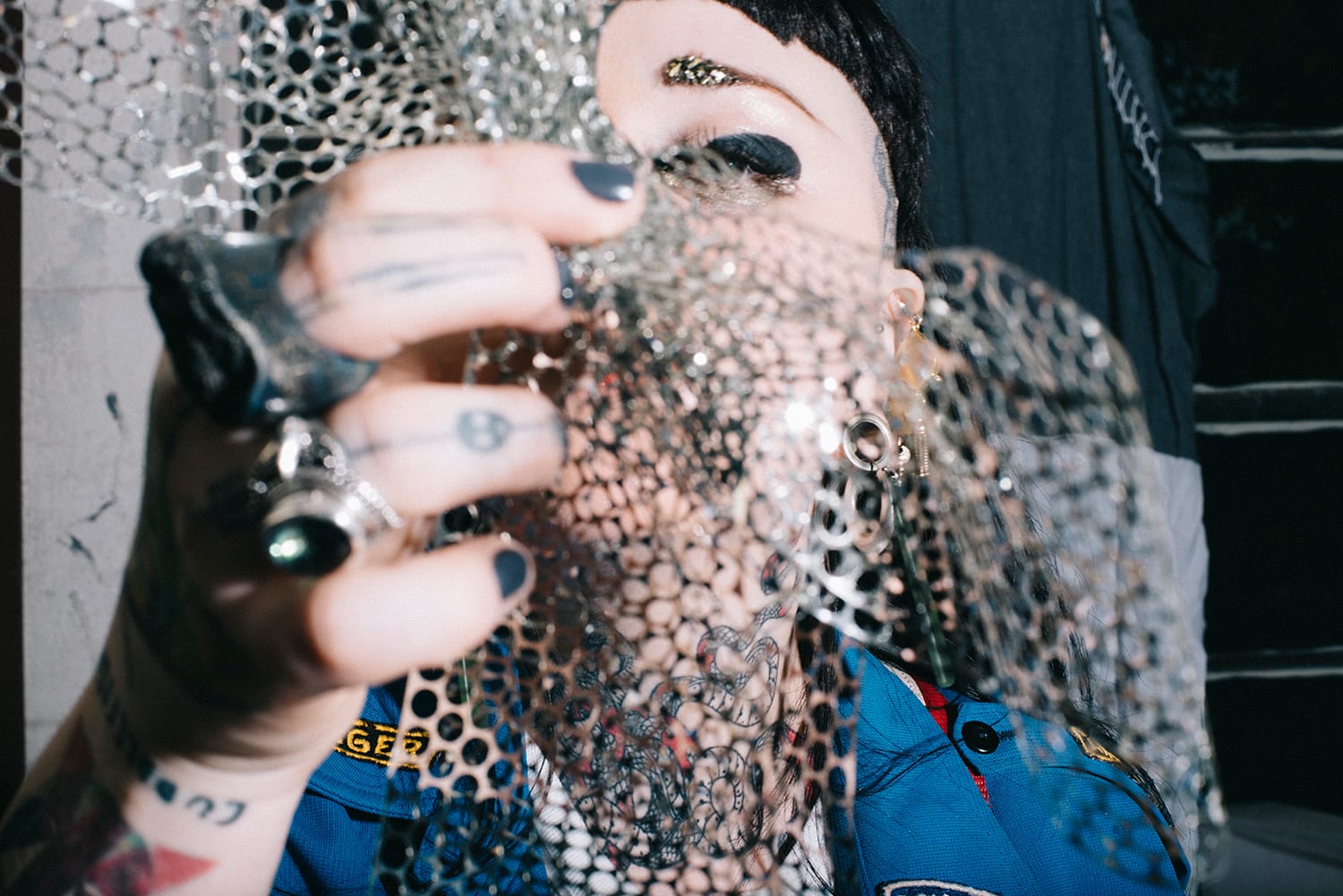
Literally connecting to people across the world.
Once you offer art to the world it will hopefully, if it is timeless, continue to evolve and be reinvented in new contexts that have different meanings. There’s so much power and beauty in that, and that’s what I strive for with my own music. Some artists can be riddled with ego, but it’s not about that; it’s a blessing if you can contribute beauty to the world and if it can live externally from you and evolve and inspire. As I’m writing something, I’m really conscious of the fact that this may be beyond me and not belong to me anymore, and that’s actually really liberating. It makes you feel less alone in the world. There’s live shows and whatever, but the real connectivity is that it goes on and enhances people’s emotional state. That’s been the most mind-blowing part about being an artist.
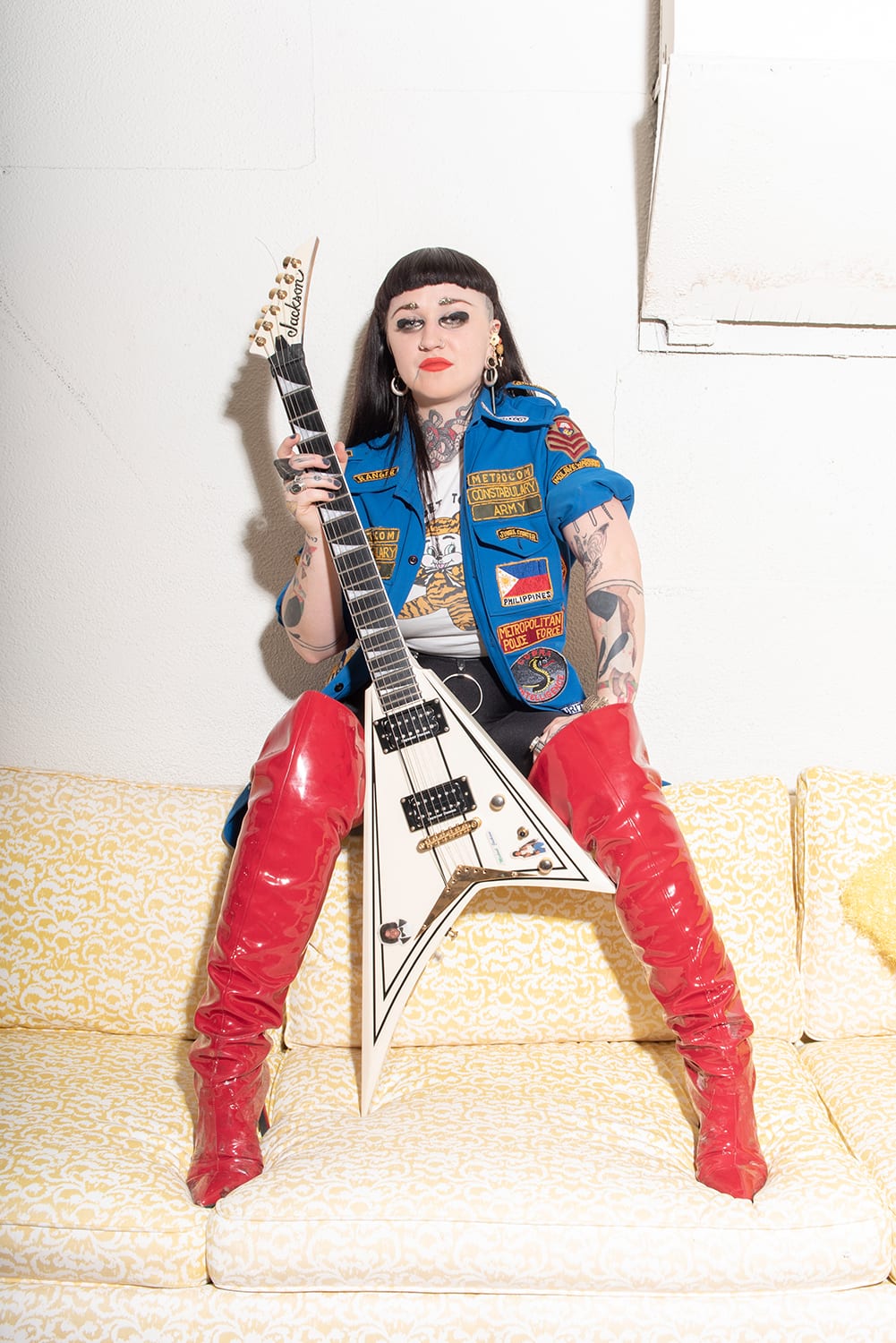
I can’t help but think about how many samples and collaborations you and Hiatus have had with giant hip-hop and pop artists. How does it feel to experience your music evolving once again?
This is happening in our own lifetime! We don’t have to wait for the future—that’s the crazy part. Even before we made Choose Your Weapon, there was a Hiatus cover band in Norway and they covered our whole catalog from watching videos of us online. We hadn’t even recorded the songs! I just feel blessed that in my lifetime, it inspires other people to do their own thing with it.
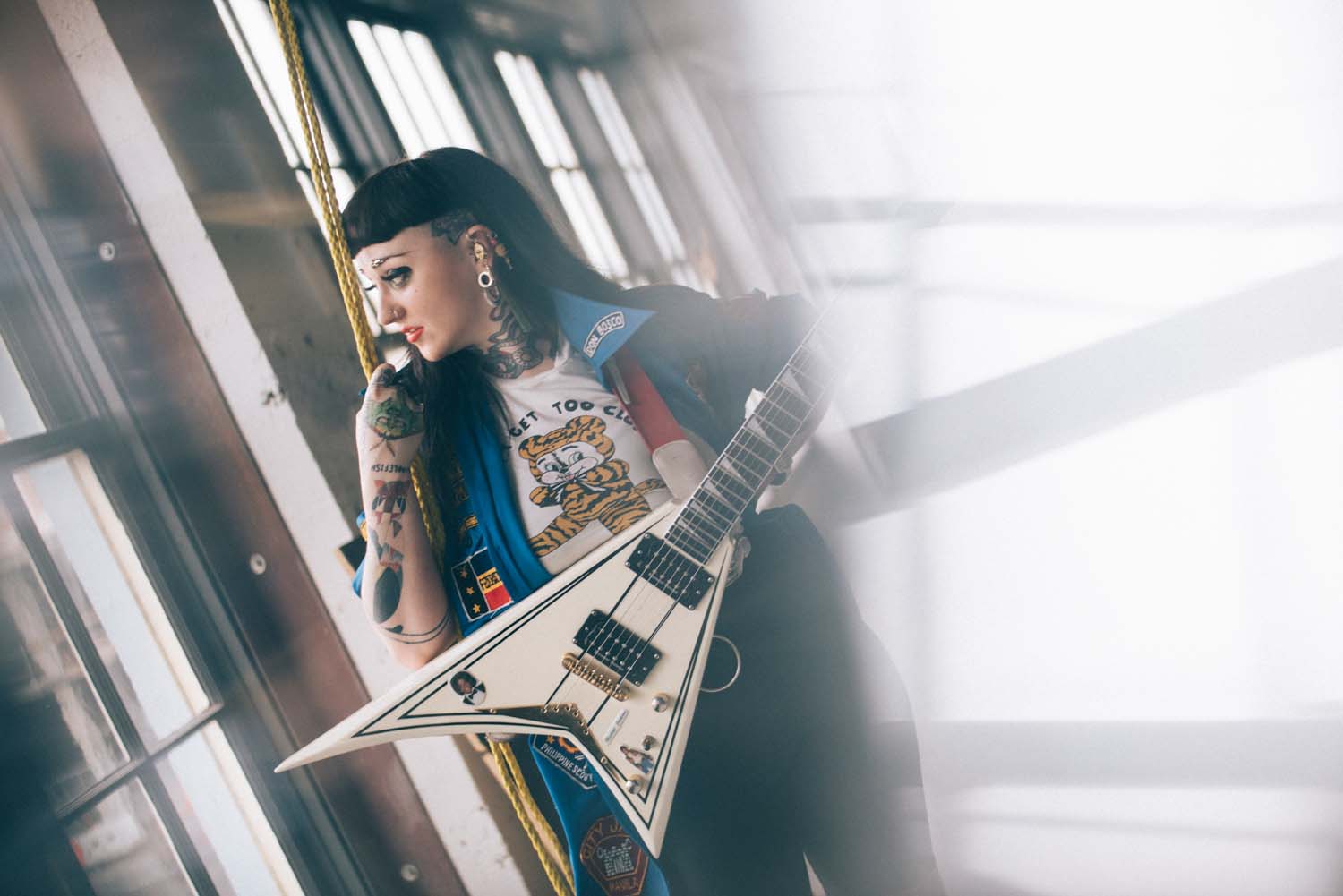
On the really crazy end of the spectrum, you have Beyoncé and Jay Z sampling our song, “The World It Softly Lulls.” When I was 16 or 17 years old, I had some San Pedro—a hallucinogenic cactus—and I climbed a waterfall and spent the whole day drinking the water and singing back into the surface. It was one of my favorite days I’ve ever had and that’s where I came up with the vocal riff for that song. Like fuck man, I was singing in a waterfall when I was 17 on cactus, and now one of the most influential people is singing it. It’s reaching people. It was literally me and one other person in the forest and now for that melody to travel into the ears of so many people…
I want to be involved and be a part of the world. That’s really cliché, but I’m really lucky that I’ve managed to make a career out of being myself. And it’s reaching people on different levels. For example, on the day that Beyoncé thing dropped, a woman messaged me on Instagram from Madagascar. She was doing field work, and she named a bamboo lemur after me. Everyone was so excited about the Beyoncé thing—and yeah, that’s great—and amidst all of that, there’s a small creature in Madagascar named after me! To me, that’s an accolade. Little things like that.
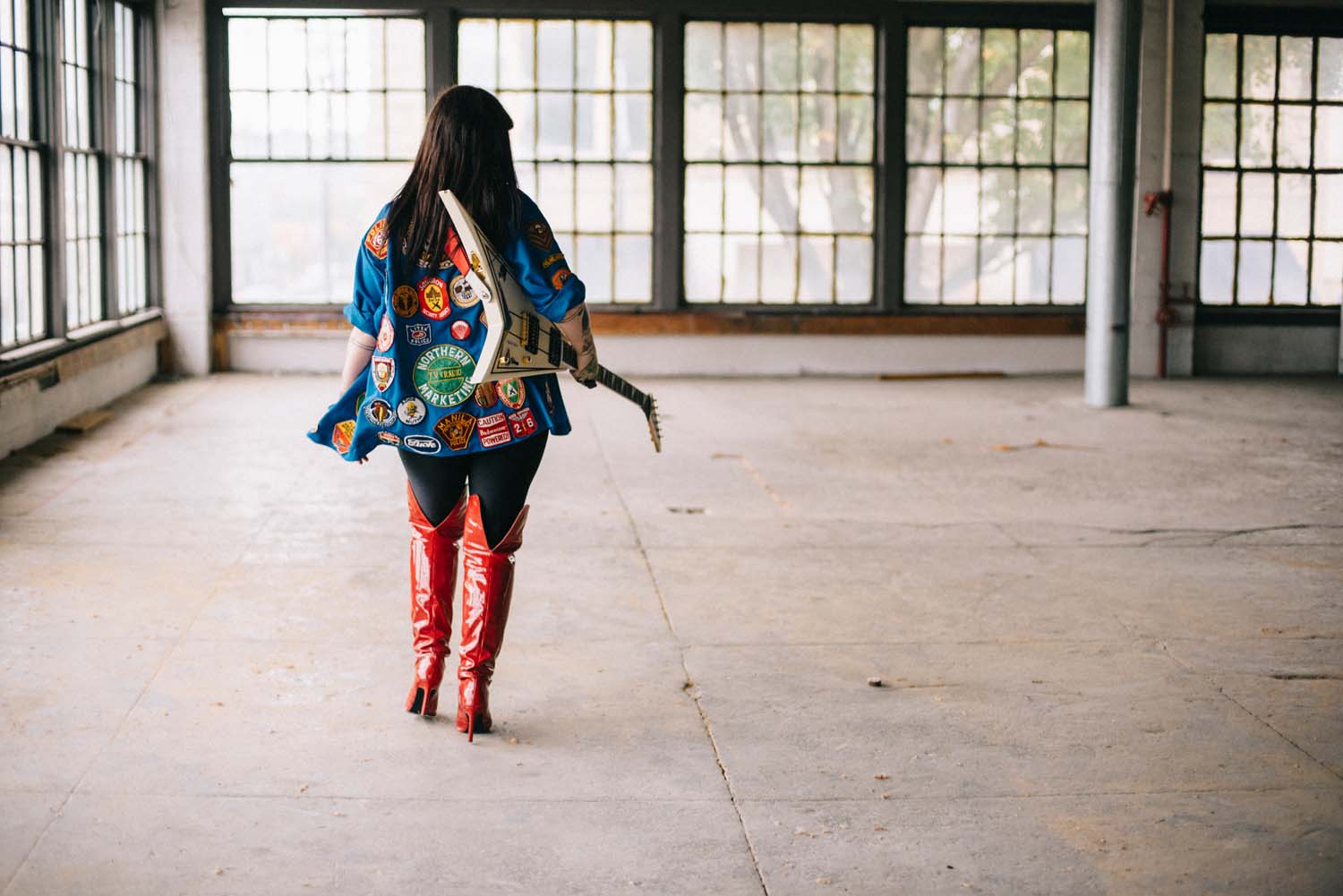
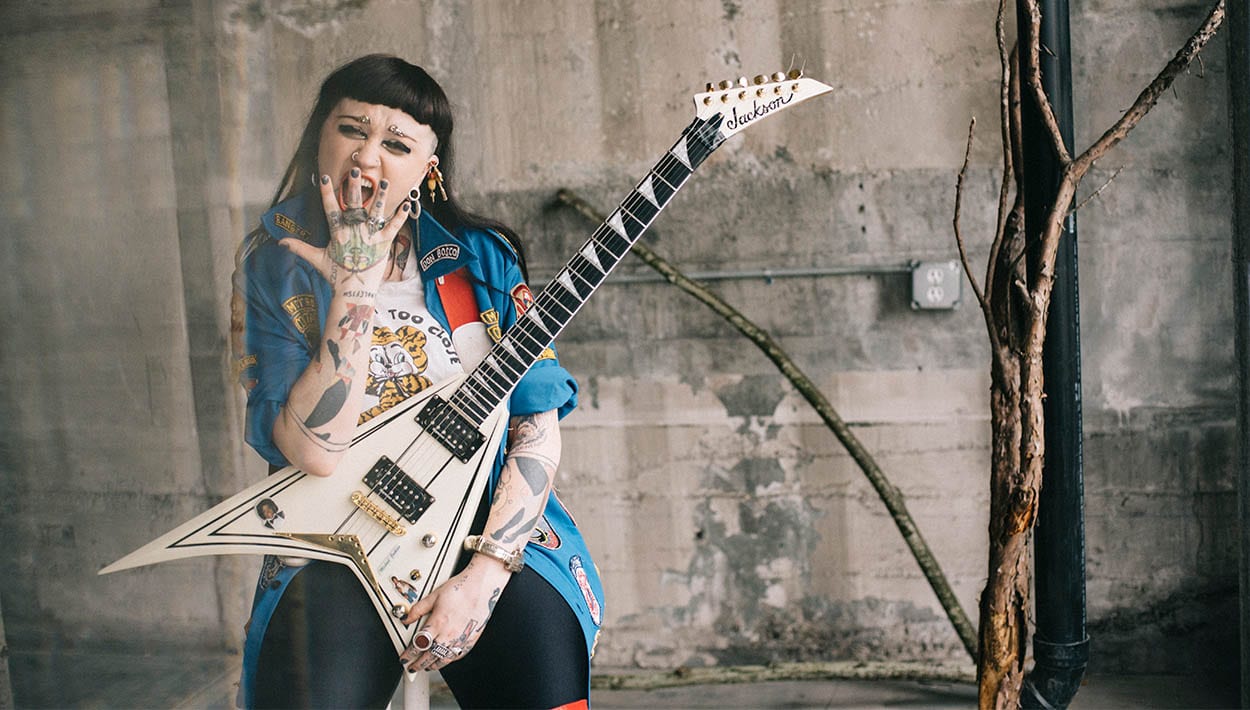

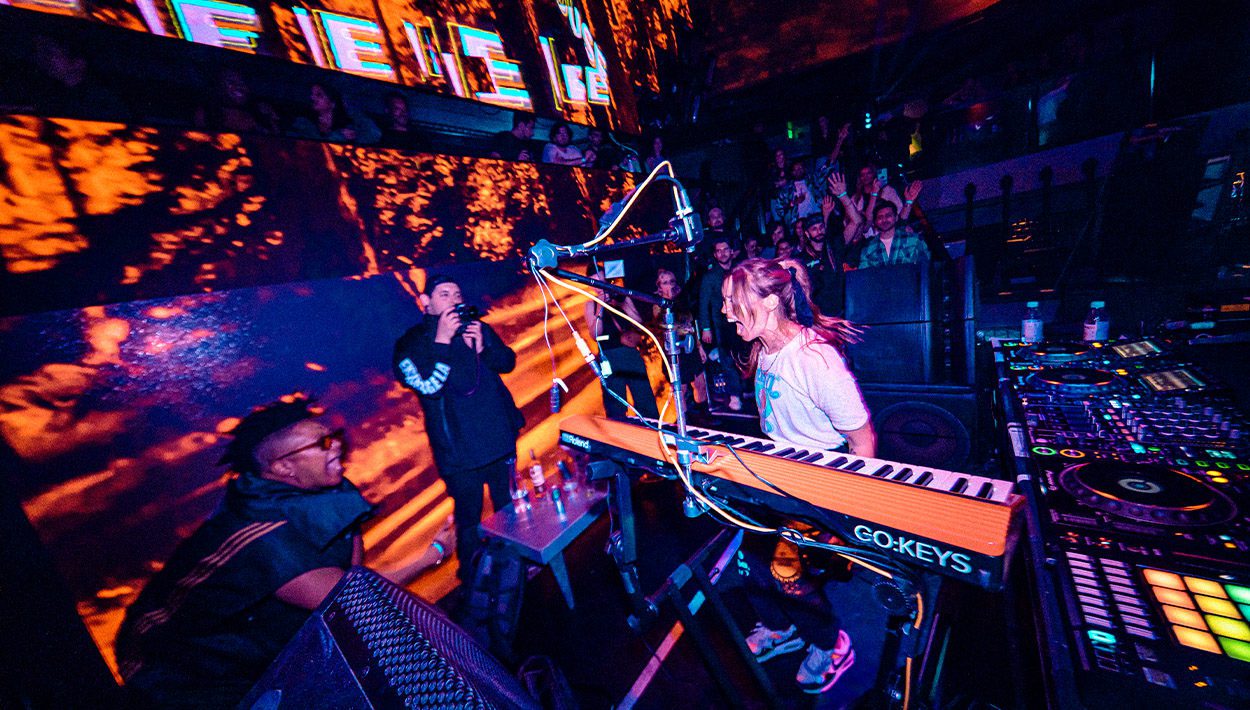
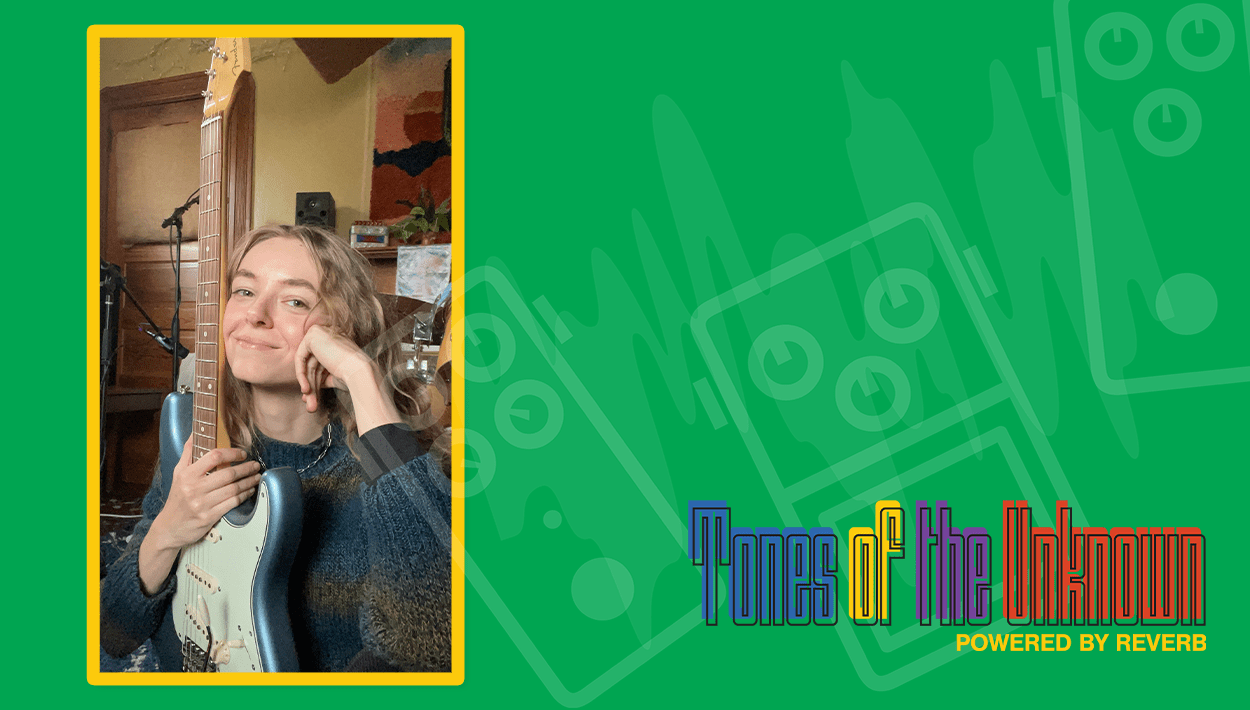
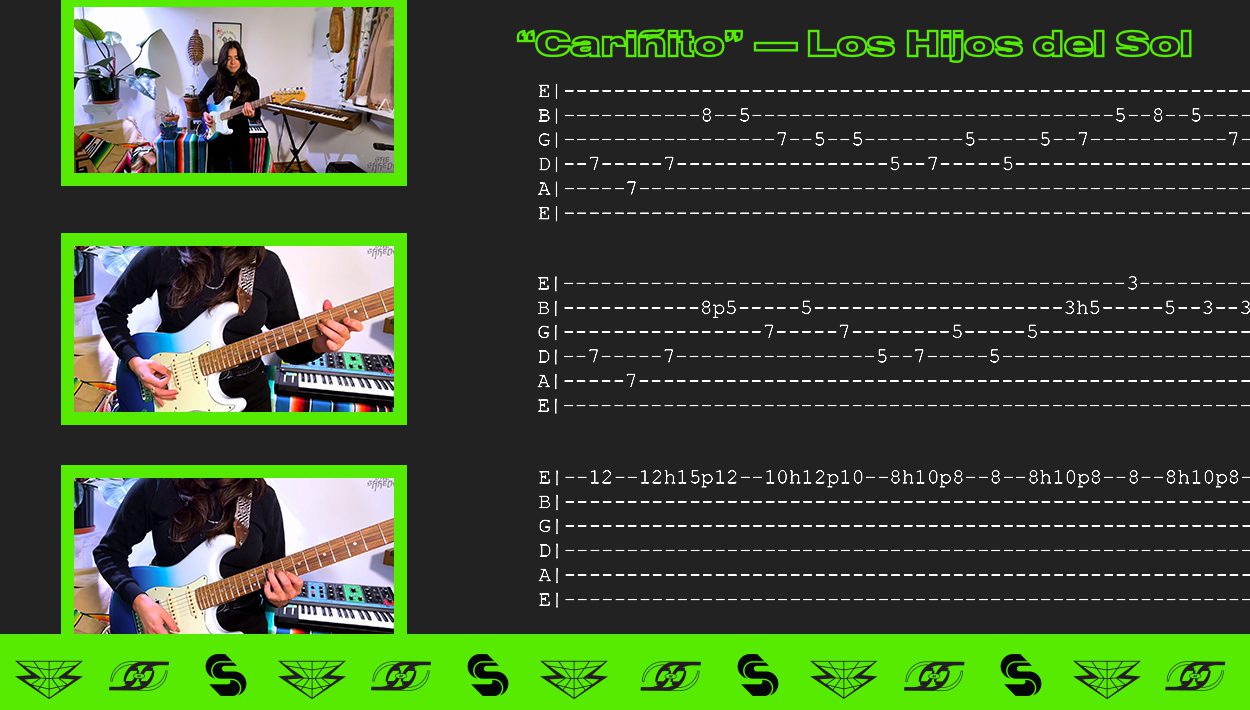
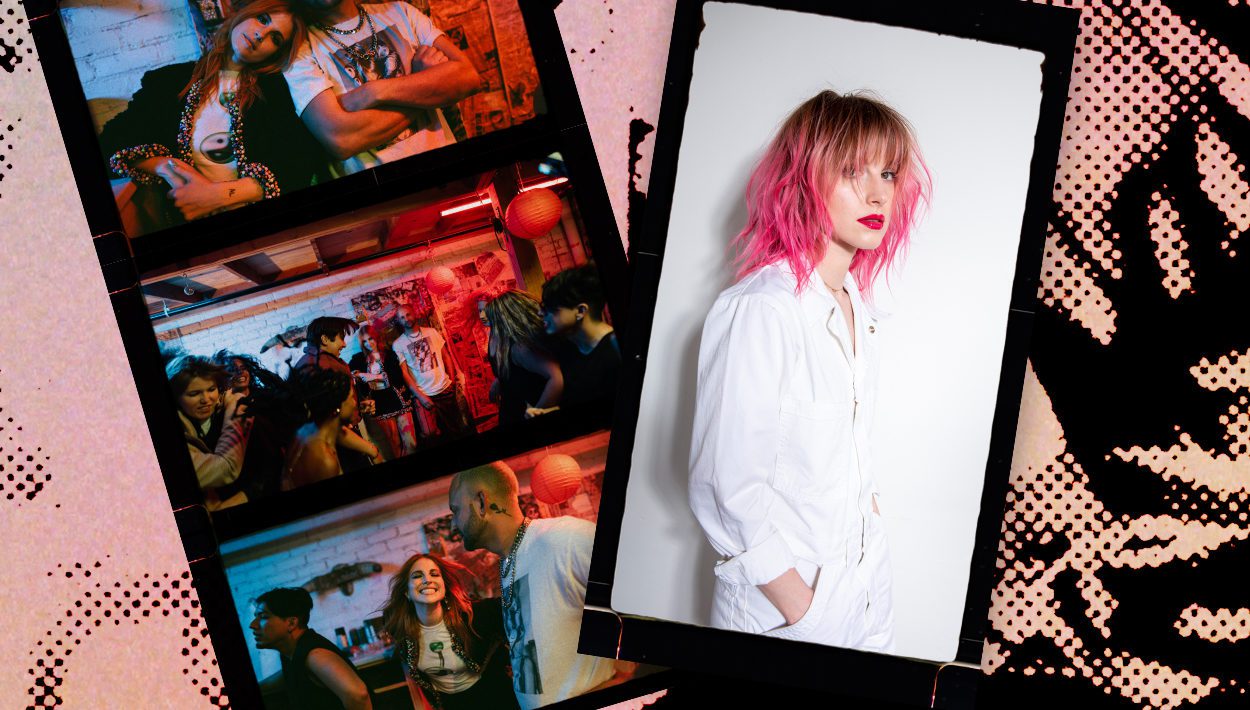

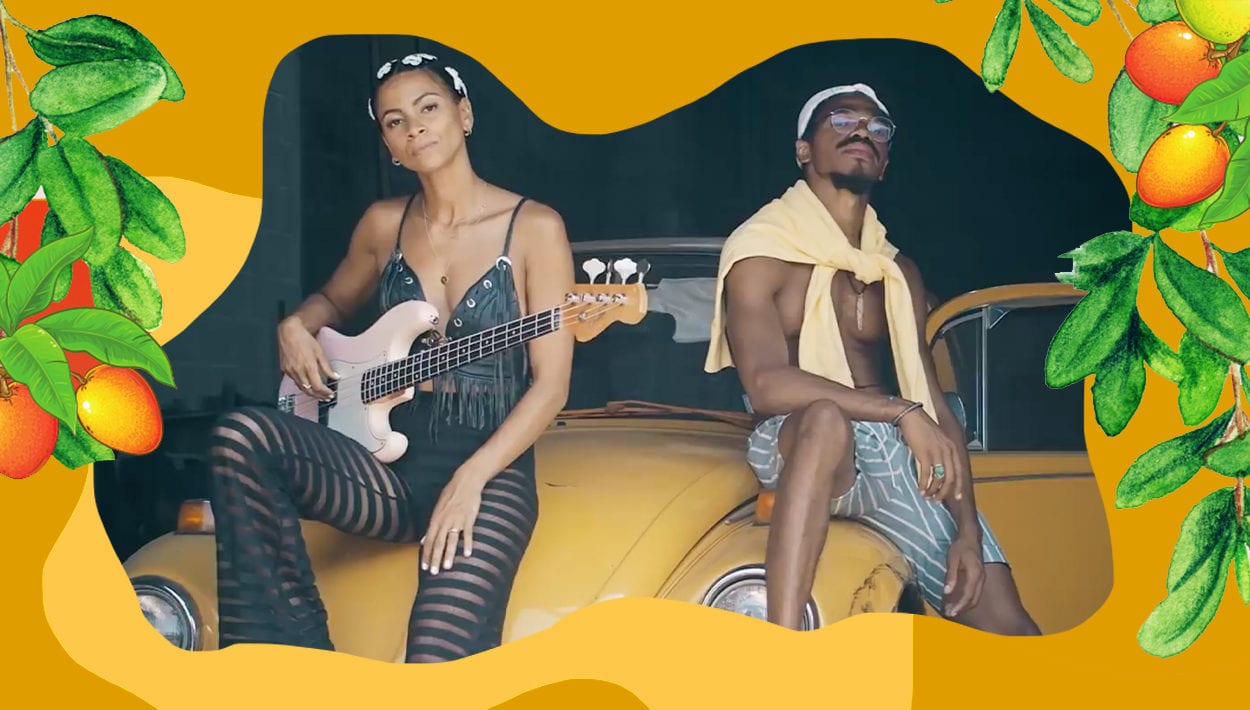
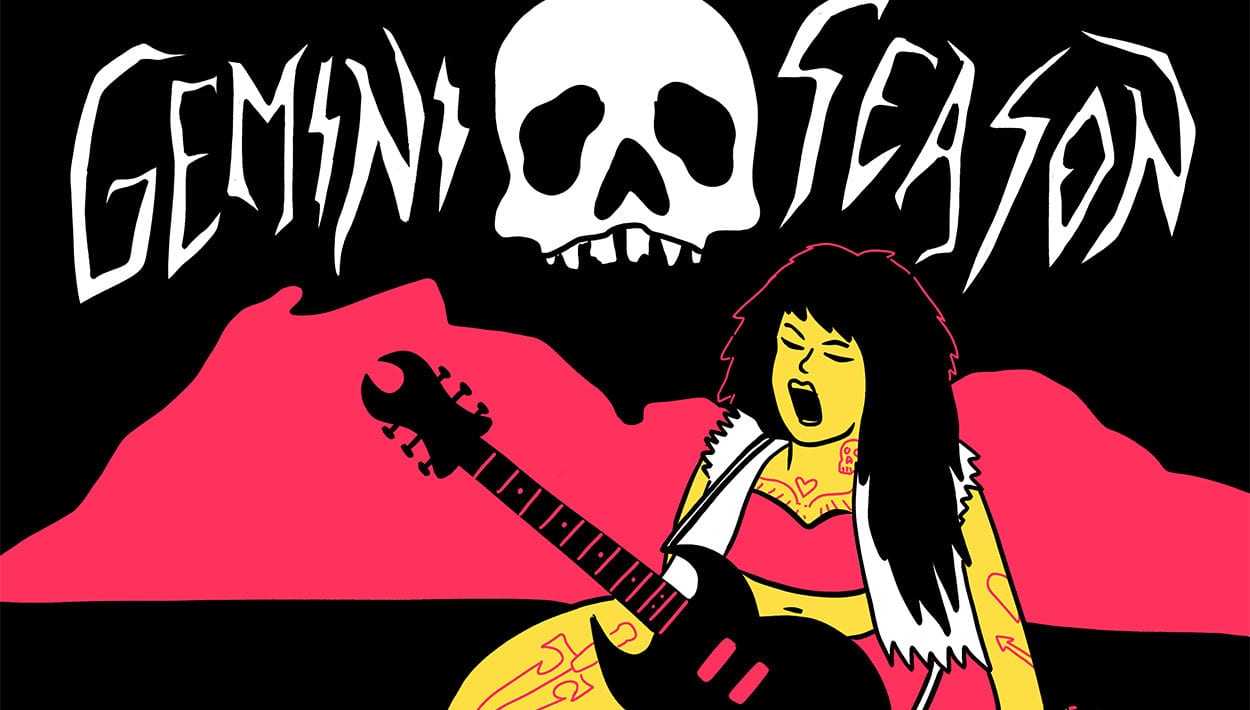

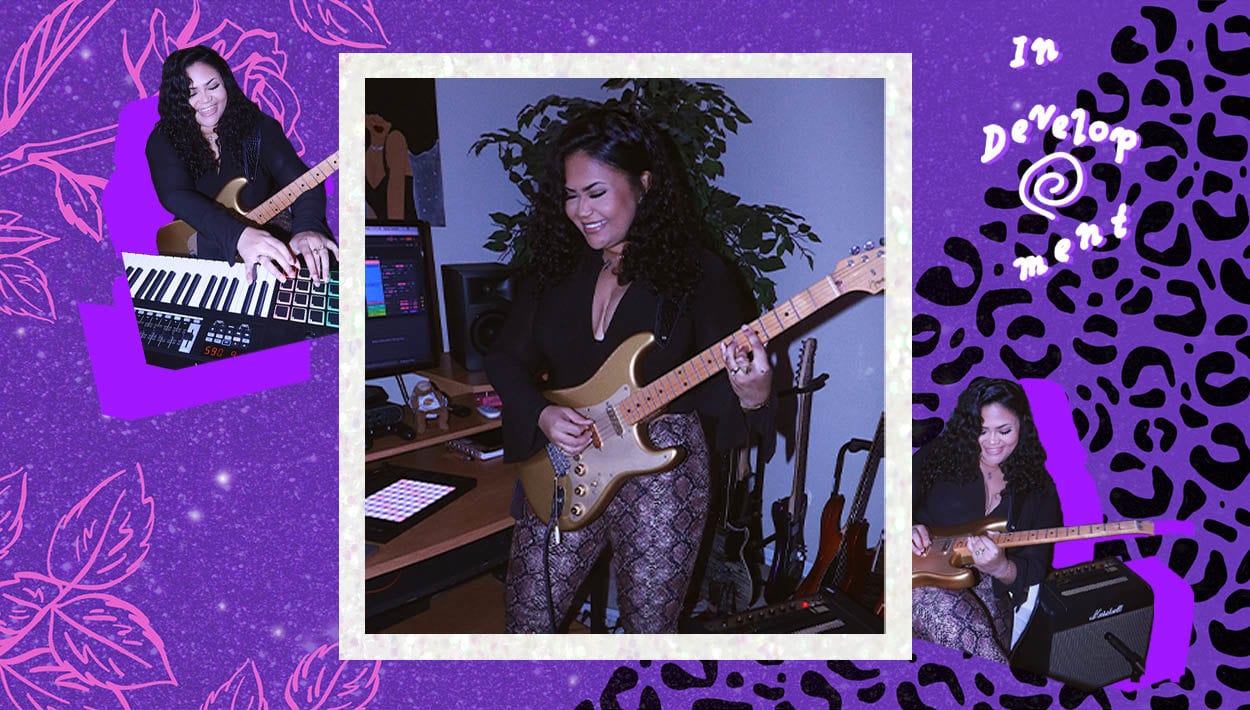
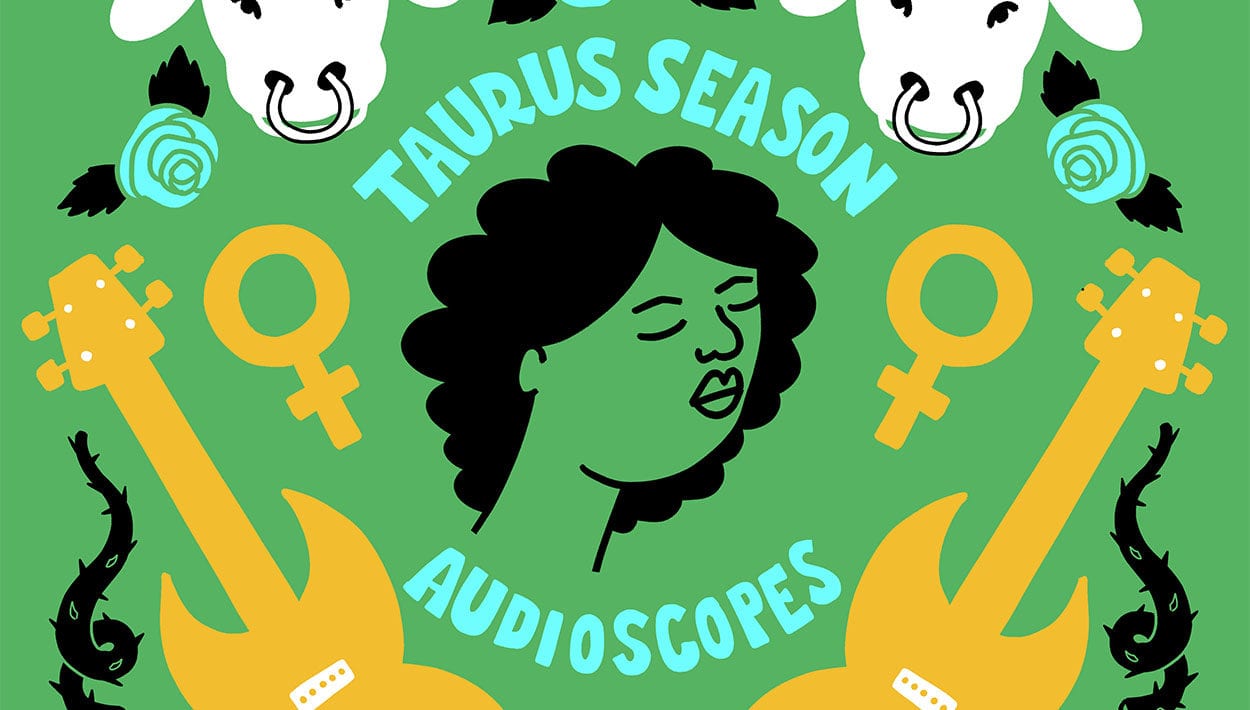


Comments
Nai, you are a gift on this Earth and I hope that with your influence we can make this world more nurturing and beautiful 🙂 thank you for all that you are
Comment by Nikki on December 1, 2020 at 4:24 pmRight now, I am going to download some songs from this website and I hope these songs as interesting as previous songs. So far, I have enjoyed all the songs here on this site because Naomi Saalfield is doing a remarkable job to sing amazing songs. Well, I am thinking to read essay websites reviews at EduBirdie source because it shares authentic reviews with us then I will hire a writer to write me an essay on this topic.
Comment by Elwyn Kertzmann on January 13, 2021 at 1:37 amRight now, I am going to download some songs from this website and I hope these songs as interesting as previous songs. So far, I have enjoyed all the songs here on this site because Naomi Saalfield is doing a remarkable job to sing amazing songs. Well, I am thinking to read essay websites reviews at EduBirdie source because it shares authentic reviews with us then I will hire a writer to write me an essay on this topic.
Comment by Lisa Hudson on January 13, 2021 at 1:41 amVery a great article. I have read many articles but this is the most informative and useful one for me The information provided by you is really very good and helpful for me. Inspired jackets Keep sharing good
Comment by source on September 3, 2023 at 8:33 am